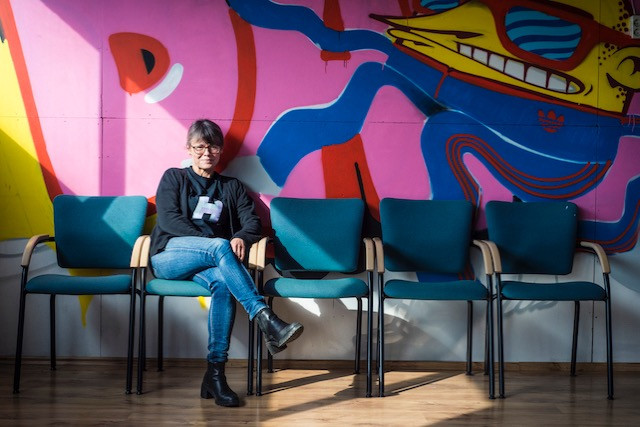Tucked between the railway track and swimming pool in Luxembourg City’s Bonnevoie district is a former factory that would not be out of place in Berlin.
Through the glass front, you can see colourful walls, a mish-mash of old furniture and young people chatting and chilling. The entire building has come to be known as Hariko though it houses a lot more than the Red Cross youth art project. Hariko (named after the French word for bean, with a twist) is run by Marianne Donven, who previously worked in the foreign affairs ministry as head of humanitarian aid.
“We opened in September 2015 as an art project giving access to art and creativity for young people aged 12 to 26,” she says. “We opened at the same time many refugees arrived, so it turned into a little bit of an integration project from the start.” This shift in focus enabled Hariko to extend its life by securing additional funding until September 2018 from the Oeuvre Nationale de Secours Grande-Duchesse Charlotte.
While the number of young refugees using its services has since fallen (largely because they have found other groups and activities) and today they account for one in five members, Hariko’s main focus remains unchanged. The project provides rent-free space to around 30 artists and musicians, in exchange for which tenants offer free workshops to young people from Wednesdays to Saturdays, between 2 p.m. and 7 p.m.
During the past 18 months, Hariko has hosted workshops on anything from yoga, theatre and dance to carpentry and graffiti art. Over the summer of 2017 they will open a Hariko beach where they will host a public music festival and members will perform a play devised by themselves at Tramsschapp in June. “Having discussions with so many creative people, there are always lots of incredible new ideas and that’s what’s keeping this house really busy and it keeps everyone motivated,” says Donven.
The lively building has also become an important hub for other projects, offering a classroom for language teaching and meeting place for community events. It also houses not-for-profits Digital Inclusion, upcycling computers, Passerell, offering legal advice to migrants and, most recently, Cohabit’Age, an inter-generational housing project.
“The house is used by many people. From now on we will count how many people go in and out every day, for if we ever have to show how useful this building is. I think it’s almost become a house of integration.”
Another motivation behind the count is the uncertain future of the building as it is rumoured it will be sold imminently. Donven is already researching potential models that would enable Hariko to continue its work elsewhere. In the event it is sold, she hopes the new owner would allow the project to remain until the owners obtain planning permission.
“There are many question marks but I think we have the potential to maybe continue in a different way,” Donven says. “There will be a way. I cannot imagine Hariko will disappear.”
This article was first published in the June 2017 issue of Delano magazine. Be the first to read Delano articles on paper before they’re posted online, plus read exclusive features and interviews that only appear in the print edition, by subscribing online.
